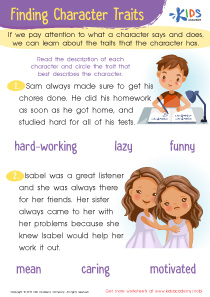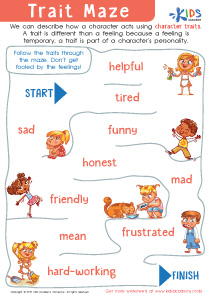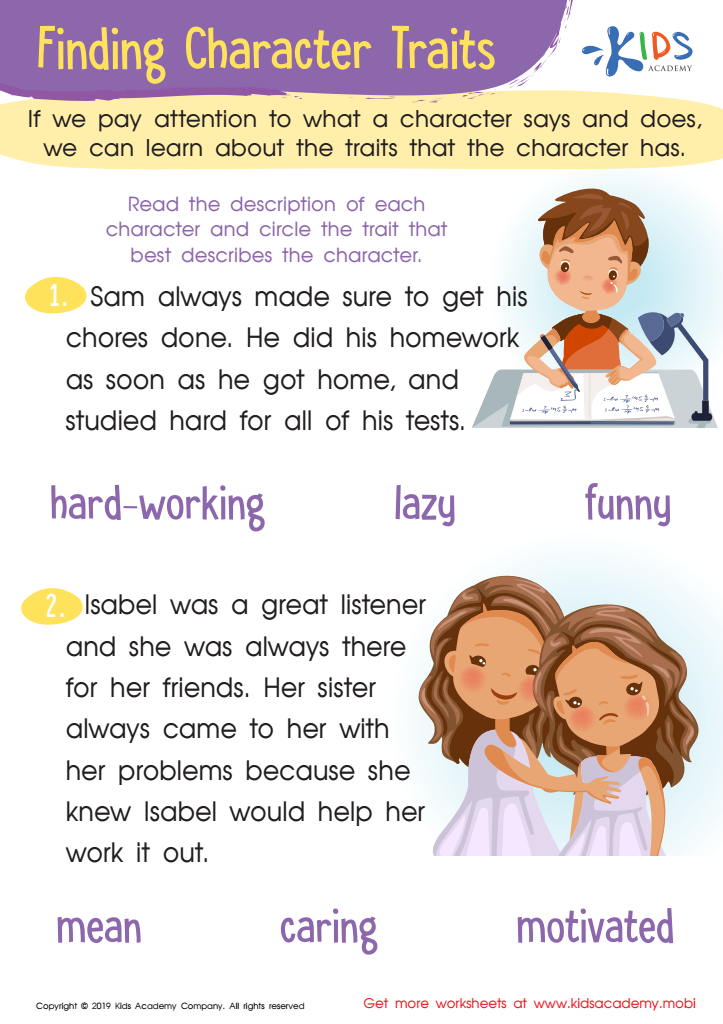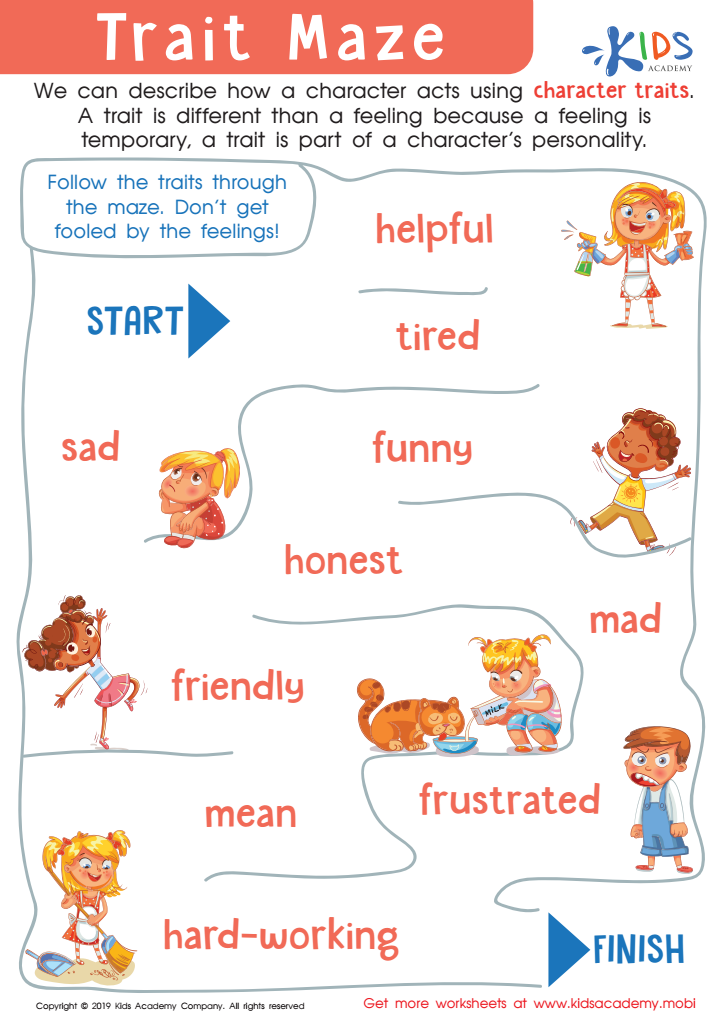Character Traits - Lesson for Grade 3, Chapter - Literature
In the "Character Traits" lesson designed for Grade 3 students, within the Literature chapter of the Comprehension unit, pupils will embark on an enriching journey to understand and identify various traits that define characters in stories. Through engaging activities like the "Finding Character Traits Worksheet" and the "Trait Maze Worksheet," students will learn to observe and articulate the qualities that make up a character's personality and behavior.
This lesson is pivotal for several reasons. Firstly, it enhances reading comprehension skills by encouraging deeper engagement with the text. Understanding character traits allows students to make inferences about motivations and behaviors, fostering a more nuanced understanding of the narrative. Secondly, this lesson serves as a foundational step in developing empathy and critical thinking. By analyzing characters' traits, students practice putting themselves in someone else's shoes, considering different perspectives and the reasons behind actions. Lastly, this skill is not just literature-bound; it aids in real-life social interactions, helping students to recognize and appreciate the diversity of people's characteristics in their own lives. Through this lesson, students gain crucial analytical tools that enrich both their academic journey and personal development.


-
Activity 1 / Finding Character Traits Worksheet
Before beginning this worksheet, you might want to make sure that your kids know what a character trait is. A trait should not be confused with a feeling, because feelings are temporary, while a trait comes with a character’s entire personality. If we pay careful attention to what a character says and does in a story, we can usually learn about some of the traits which the character possesses. Help your kids read the description of the characters in the worksheet, and then circle the trait that best describes the character.
-
Activity 2 / Trait Maze Worksheet
In stories, the author and readers can often describe how a character acts using character traits. What is a trait? A trait should not be confused with a feeling, because feelings are temporary, while a trait comes with a character’s entire personality. In this worksheet, your kids will be learning more about the different character traits. Ask them to follow the traits through the maze, and ignore the feelings which are also on the path.



